Real Madrid vs FC Barcelona | Tactical Analysis | Supercopa 2025 Final
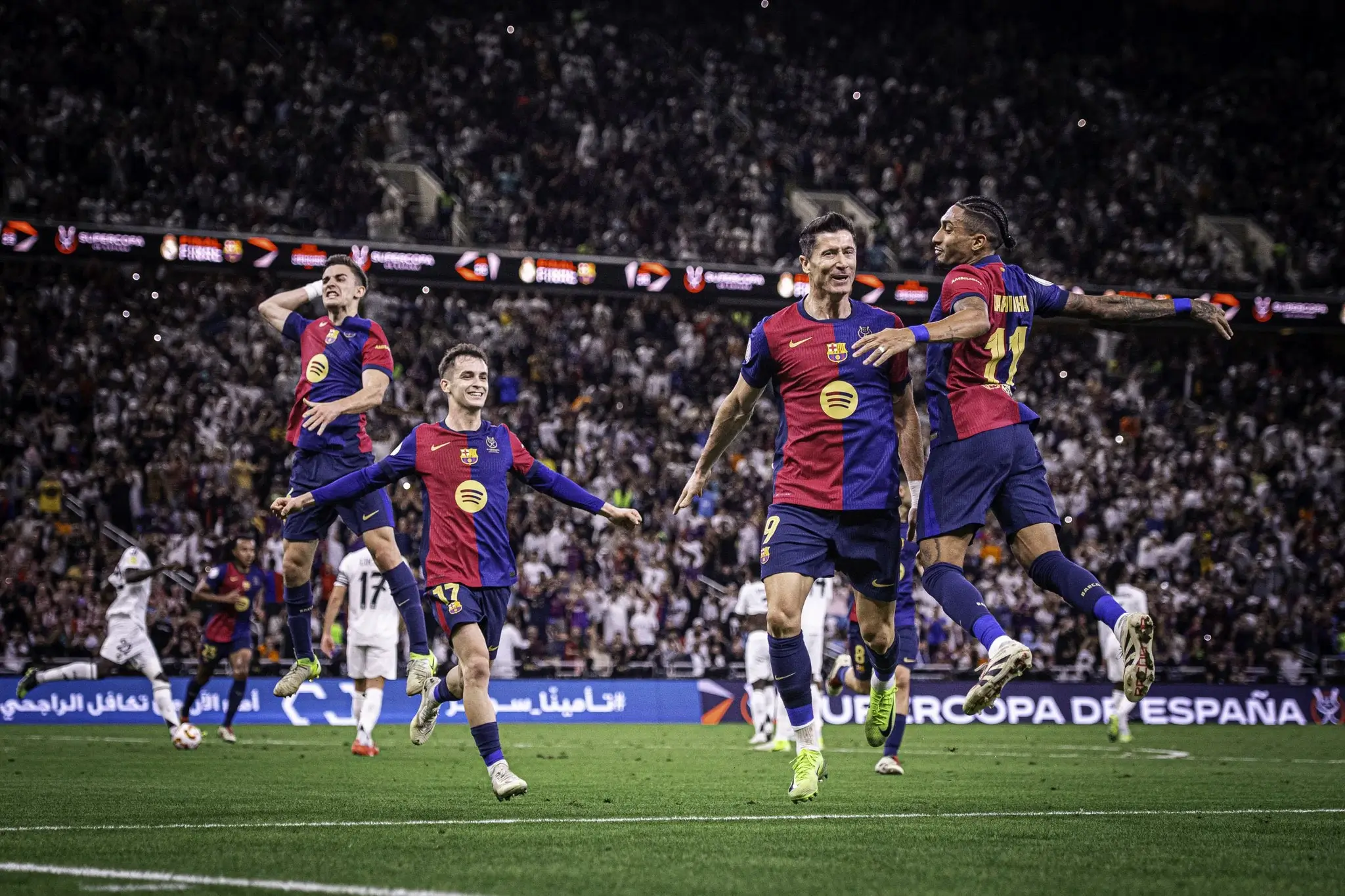
The long-standing rivalry between Real Madrid vs FC Barcelona reaches another thrilling chapter as they clash in the Supercopa final, played in Jeddah. Real Madrid enters the match with significant absences: Dani Carvajal and Éder Militão are out long-term, and Aurélien Tchouaméni steps into the defense alongside Rudiger. David Alaba, returning from a lengthy injury, starts on the bench. Barcelona, too, faces challenges. Marc-André ter Stegen is sidelined with a long-term injury, replaced by Szczesny. Ronald Araújo, recently back from injury, is also on the bench, joined by Dani Olmo and Pau Víctor, who faced registration delays due to financial constraints. Ansu Fati is notably excluded from the squad, sparking rumors of a potential departure.
Table of Contents
Starting XI’s and Formations
Starting XI Real Madrid (4-2-3-1)
- GK: Courtois
- Defenders: Mendy (LB), Rudiger (LCB), Tchouaméni (RCB), Vázquez (RB)
- Midfielders: Camavinga (LCM), Valverde (RCM)
- Attackers: Vinícius Jr (LW), Bellingham (CAM), Rodrygo (RW), Mbappé (ST)
Starting XI FC Barcelona (4-3-3)
- GK: Szczesny
- Defenders: Balde (LB), Martínez (LCB), Cubarsi (RCB), Koundé (RB)
- Midfielders: Pedri (LCM), Casado (CM), Gavi (RCM)
- Attackers: Raphinha (LW), Lewandowski (ST), Yamal (RW)
First-Half Analysis: Real Madrid vs FC Barcelona
Barcelona’s Dominance in Possession and Pressing
In the first half of Real Madrid vs FC Barcelona, Barcelona set the tone early with their high pressing game in the usual 4-3-3 formation, ensuring that Real Madrid spent much of the first half on the back foot. Their 66% possession allowed them to control the flow of the match, with Balde and Raphinha frequently causing trouble down the flanks. Madrid struggled to contain these two as Balde pushed up high on the left, exploiting Vazquez’s lack of pace, while Raphinha inverted his runs into the left channel or central zone to create space while Lewandowski dropped deeper to create an numerical overload on the midfield. Read our other blog to know more about the positions of football.
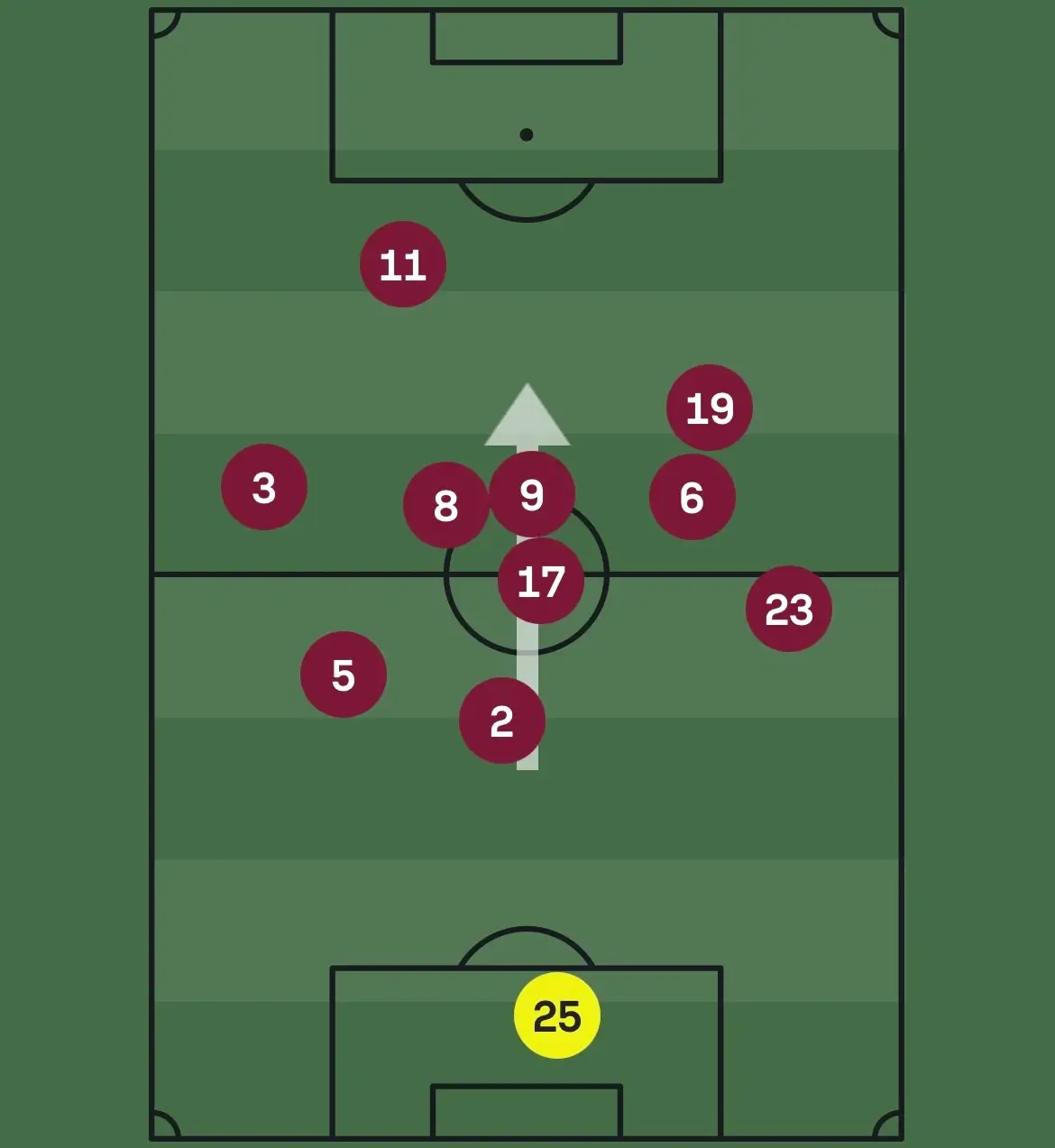
Real Madrid’s Counterattack and Struggles with Barcelona’s High Line
Despite Barcelona’s dominance, Real Madrid managed to exploit the space left behind by Barcelona’s high defensive line. Mbappé took full advantage of this, sprinting the length of the pitch to score the opening goal. Madrid’s counterattacks, while fast, were often disrupted by Barcelona’s well-structured defense. The 1-0 lead didn’t last long, as Barcelona’s quality in possession began to shine through, culminating in Raphinha’s header and Balde’s composed finish.
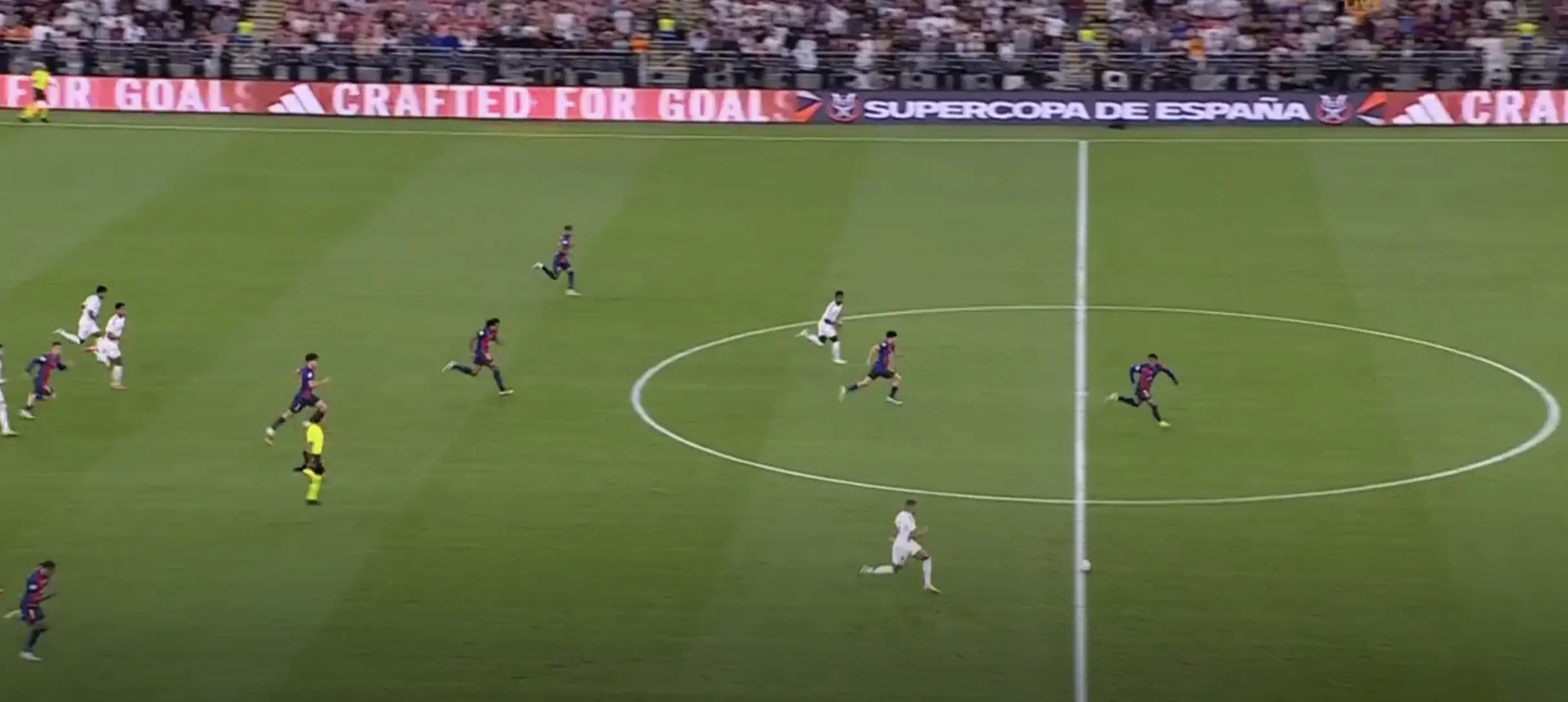
Defensive Issues and Tactical Adjustments for Madrid
Real Madrid’s defense, particularly Vazquez and Tchouaméni, who didn’t play in his natural midfield position, found it difficult to handle Barcelona’s attacking threat, especially with Lewandowski dropping into midfield, pulling Rüdiger out of position. As a result, Madrid’s backline looked exposed, giving Barcelona more chances to exploit. With 34% possession and limited shots on target, Madrid struggled to create meaningful opportunities, while Barcelona registered 7 shots on target.
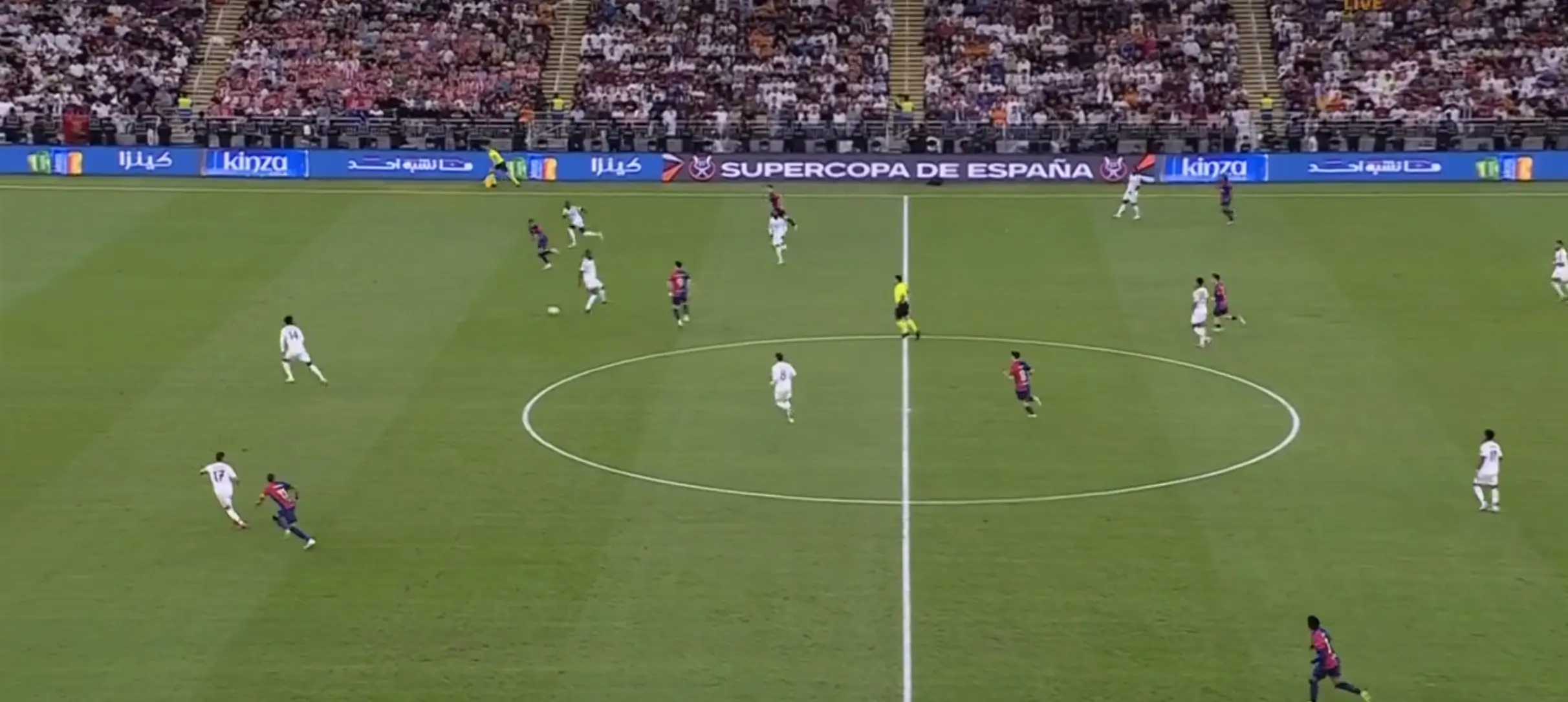
Barcelona’s Clinical Finishing and Madrid’s Missed Opportunities
Barcelona took full advantage of their chances, with Lewandowski calmly converting a penalty after Camavinga fouled Gavi in the box. The xG difference, with Barcelona registering 2.26 compared to Madrid’s 0.98, reflects the difference in clinical finishing and the effectiveness of Barcelona’s attacking play. Courtois did his best to keep Madrid in the game, making several key saves, but the gaps in defense allowed Barcelona to extend their lead with a second-half goal from Balde.
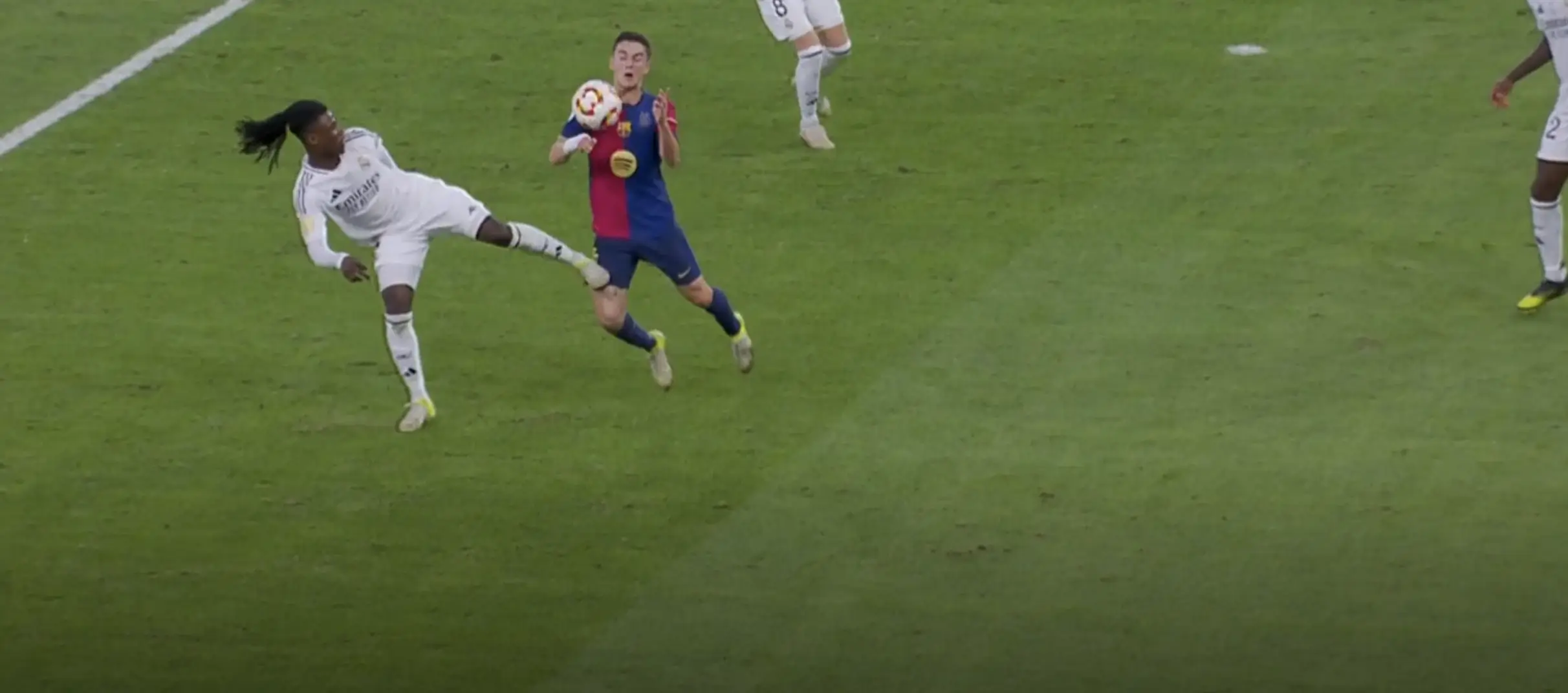
Looking Ahead: Tactical Changes for Real Madrid
As the second half of Real Madrid vs FC Barcelona comes up, Ancelotti must adjust his tactics, particularly in dealing with Balde and Raphinha on the wings. Madrid’s defense needs to tighten up, and a more direct approach in attack could help them make use of the pace of Mbappé and Vini Jr. to break down Barcelona’s defensive line.
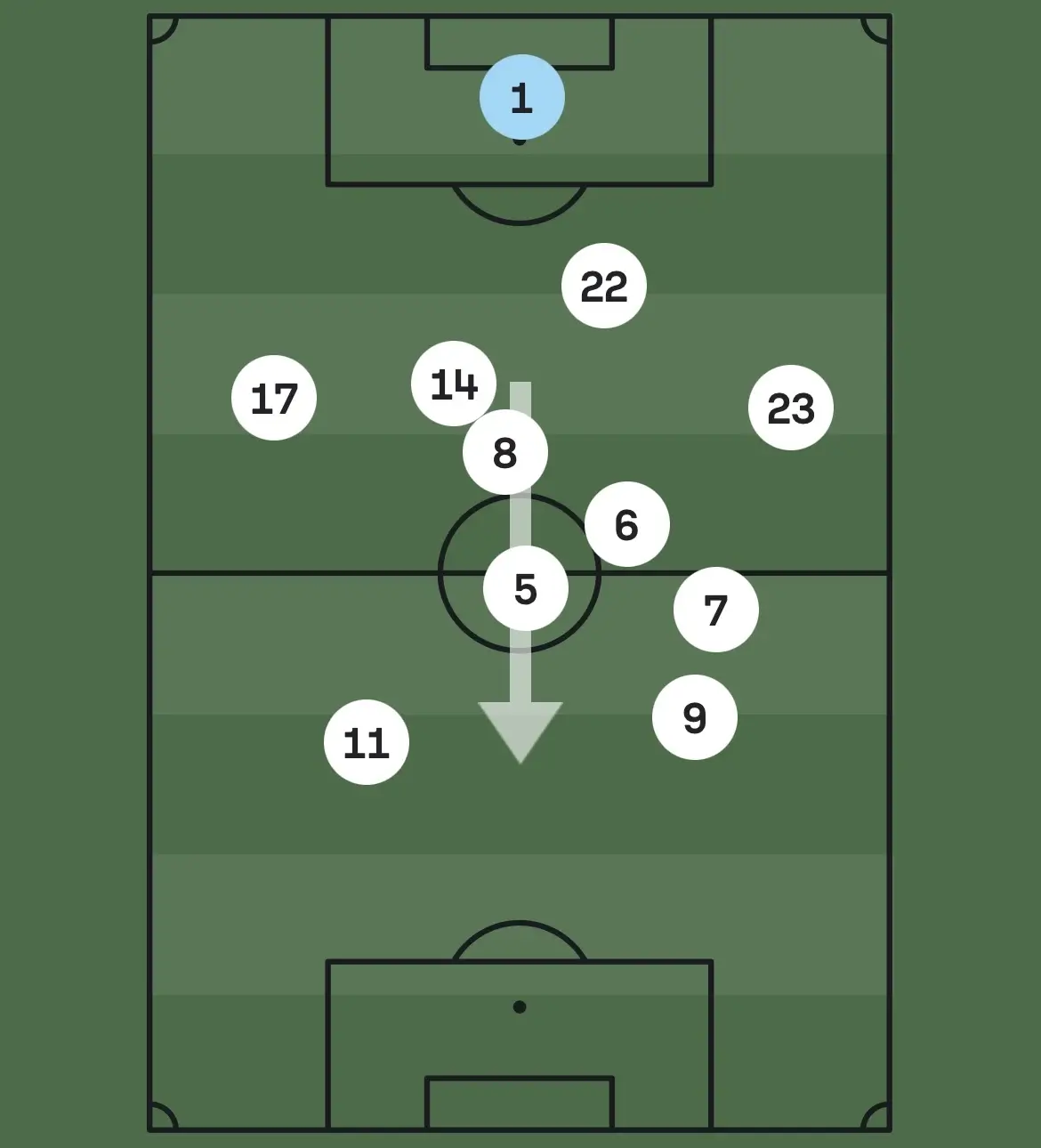
Second Half Analysis: Real Madrid vs FC Barcelona
In the second half of Real Madrid vs FC Barcelona, Barça extended their lead, with Raphinha and Balde showing their blistering pace, which Real Madrid struggled to contain. The pivotal moment came when Barcelona’s goalkeeper, Szczęsny, was sent off for a foul on Mbappé after the VAR had second look on the interception. leaving Barcelona with a numerical disadvantage but still holding their ground with tactical discipline.

Barcelona’s defensive strategy with 10 men shifted to a 4-4-1 formation, with Olmo and Raphinha tracking back to assist defensively, while the wingers continued to exploit space on the counter, playing in a 4-2-3 formation with Olmo on the left and Raphinha on the right wing. Despite Real Madrid’s attempts to mount pressure, including a brilliant free kick from Rodrygo and a few close calls from Rudiger and Mbappé, Barcelona’s defense held firm, and the game ended 5-2.
Barcelona’s Tactical Masterclass
Barcelona’s tactical flexibility, especially with their fluid attacking transitions and defensive organization, was the key to their commanding victory. Even with 10 men, their 4-4-1 formation made it nearly impossible for Real Madrid to break through. The performance of Balde and Raphinha was exceptional, while Lewandowski’s intelligent link-up play showed why Barcelona’s attack remains one of the most dynamic in Europe.
Conclusion
Barcelona’s triumph in the Supercopa was well-earned. Despite Real Madrid’s possession edge and a few strong attacking moments, Barcelona’s high pressing, swift transitions, and defensive resilience ensured their victory. This win further cements Barcelona’s position as one of Europe’s elite teams. With a combination of tactical discipline and technical brilliance, Barcelona sent a clear message that they are ready for the challenges ahead.
What did you think about the clash between Real Madrid vs FC Barcelona? Let us know in the comment section below or join the conversation on Instagram!
